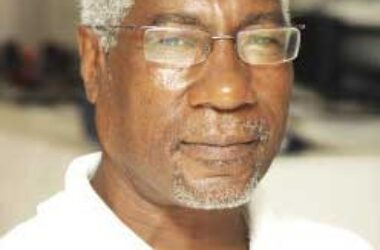
OVER the last few weeks following the CDB review, we’ve had breaks in our discussions of the economy, and so a recap might be helpful.
The first is that our economy is in worse shape than we might initially have imagined, even if this statement causes some of us discomfort. For those of us who see that statement through a political lens, they may want to revisit our previous discussions of the Budget, but that is not going to be helpful as we are where we are.
The question posed a few weeks ago of why raise these issues now is however more interesting, as it inadvertently makes the point that were these discussions motivated by partisan politics, then the comments would have served a greater purpose prior to the elections.
The CDB is however clear in its advice that we must undertake fiscal reforms now if we are to set our economy on a path to recovery, and outlined those reforms in their presentation during the press conference of September 21. This is impartial advice and it contradicts the information that had been disseminated by the previous government suggesting that the economy had turned the corner and that it was now on a path to growth.
But we all respond to triggers, or benchmarks, or deviations from the norm. So the absence of a budget debate caused me to examine the budget, and the statement by the CDB at their press conference that our Debt to GDP ratio was 75% in 2015 caused me to wonder how the CDB had arrived at a lower estimate than the IMF who estimate that ratio at 79.1% for 2015, and 79.8% for 2016 (IMF World Economic Outlook Database, October 2016). CDB has now revised their ratio for 2016/2017 to 79.3%, in line with the IMF’s 79.8%.
That IMF Database also provides firm figures for our Debt to GDP ratio of 67.4% for 2011, 74.5% for 2012, 79.6% for 2013, and 80.2% for 2014. So that while our Debt to GDP ratio has risen from 64.7% to 79.8% over the last five years, there are still those who persist in suggesting that the ratio has instead fallen.
Then the Prime Minister reported that our Overall Deficit was EC$128m, and, recognizing that figure from an earlier year, we had a quick look at the Estimates of Expenditure for 2016-2017. This revealed that the Overall Deficit has been practically constant at EC$128m for the last three years.
There is something odd about a benchmark that remains at a fixed level for three consecutive years, and this led to a quick review of the arithmetic. This review revealed that while the repayments of principal on our debt were included in the item for Total Expenditure, they were excluded in the statement of Overall Deficit.
We had also drawn attention to the change in the format of the Budget starting in 2014-2015, and pointed to the effect that this had had on the 2012-2013 Estimates. Those Estimates showed a change from an “Overall Balance” of zero in the 2012-2013 Estimates to an “Actual Overall Deficit” of $334m in the 2014-2015 Estimates without comment either in the Estimates themselves, or in Parliament.
Not only did the format for reporting change in the 2014-2015 Estimates, but the emphasis on the nature of the information provided also changed, and while much more information is provided than in the earlier presentations, the information necessary for our Parliamentarians to debate the budget is obscured.
While there may be a technical reason for presenting an “Overall Balance”, allowing the benchmark “Overall Balance as a % of GDP to be included in the Estimates, this “Overall Balance” cannot be presented as the identical sum as “Overall Surplus/Deficit”. So that, for example, the Budget Estimates for Barbados for 2016-2017 provide clarity and report both the “Overall Fiscal Balance” and the “Overall Fiscal Balance less amortizations”, the latter of which is used to determine the “Fiscal Deficit as a % of GDP”.
As it now stands, persons reviewing the Budget Estimates will not arrive at a correct value for our “Overall Deficit” as the true figure is only shown in the line item for “Total Financing”. The components of that Financing, however, do not relate to any of the expenditures shown, and it is therefore more likely than not that the understated value of “Overall Deficit” will be accepted.
Then, we also hear that our recurrent expenses are significantly understated, so that our recurrent and overall deficits will be higher than indicated in the budget for 2016-2017, if, for example, we are to undertake any maintenance of our schools, or operate our new hospital.
We are also now told by the CDB that nearly EC$1.5bn of our total EC$3bn debt is short term, that servicing of that short-term debt is a major challenge to the government and that it will have to be restructured.
As a country, we seem to have become addicted to debt, and the first step to recovery from that addiction is an acceptance of the true condition of our economy. While we may each have anecdotal evidence of the poor state of its health, we also now have data, and that data indicates unequivocally that our economy is in worse shape than we were previously led to believe.
Thankfully, the final report of the CDB review of our economy is now available. In its background to the report, the Bank indicates that the Government of St. Lucia had advised it of its planned “five to stay alive” tax relief measures for citizens, and requested that the Bank undertake a diagnostic review of the current fiscal and debt situation in St. Lucia. In undertaking this study, the Bank was also required to provide guidance on policies that would need to be implemented to offset any adverse effects of the tax relief measures, as the government’s stated policy was that the intended measures should not unduly burden the public finances.
CDB established three scenarios for study, the Baseline scenario being to consider the existing economy without any new measures being put in place. The Bank concluded that in its current state, the economy was on an unsustainable path.
The next scenario, Scenario 1, considered the economy following implementation of the government’s intended policies, with the Bank concluding that without additional policy measures the economy would worsen, with the Debt to GDP ratio rising unsustainably. The Bank therefore advised that mitigating measures to close revenue leakages and reduce inefficiencies would be required if the Government’s tax relief policies were to be successful, further adding that these are measures which should have been addressed previously.
In the CDB’s third consideration, Scenario 2, the Bank went on to consider measures additional to those in Scenario 1 that would enable our Debt to GDP ratio to return to the desirable level of 60% by 2030. Among these is a reduction in the number of VAT-exempt and zero-rated items, limiting growth in wages, and prioritizing capital expenditure to focus on projects with high development impact.
In addition, the Bank advises that management of our debt service will be critical to long-run fiscal and debt sustainability, and recommends an approach to multilateral financial institutions without however indicating which those may be.
The CDB report gives us the sense that we can bring our fiscal issues to manageable levels, and that once we do that, we will then become eligible for concessionary financing and for further assistance with our development efforts. And so, the review is an important first step for a new administration in the engendering of confidence on the part of our development bank that government is prepared to embrace its advice, and prepared to bring prudent management to the economy.
With respect to the comments on the CDB report in the edition of this newspaper of October 1, it turns out that the references to the report were accurate, although the conclusion that implementation of VAT should be delayed ignores the Bank’s advice in Scenarios 1 & 2 which proposes mitigating measures to counter revenue loss due to any reduction in VAT. The outstanding question then is where this information could have come from, as the final CDB report was not public prior to November 09.
The more troubling issue with respect to the statements on the CDB Report was the October 2 comment by the Leader of the Opposition in which he quoted the report verbatim: “Under the baseline scenario, the objectives that GOSL has set for itself will not be realised”, as this ignores the following statement by the Bank that “The implementation of mitigating measures will be necessary so that the functions of Government are not compromised.”
The Leader of the Opposition’s quotation of the CDB also ignores the fact that that statement was made in respect of the Baseline Scenario, the existing economy prior to any intervention, i.e. the economy which he left behind. The Bank further proposes Scenarios 1 & 2 which recognize the implementation of the government’s proposed tax relief measures.
When the Leader of the Opposition then concludes that “This means that the UWP plans would wreck the economy of our beautiful island”, it is an expression of his own opinion, and not one that can be attributed to the CDB. And where could the leader of the Opposition have obtained this information when it was only made public on November 9?
The CDB is a regional institution, and one of the few that has served this region well. It is also an institution which the Leader of the Opposition will eventually have to turn to whenever his Party is returned to office, and the CDB must not be dragged into the political arena.
The CDB has however offered us sober advice on the path to our economic recovery, and we must consider it. Next week, we explore the possibilities of agriculture and of construction, more in an attempt to frame the problem than to define a solution.














Prescod,
That was quite a soliloquy – to what end?
Nudge
See next two articles. CIP would mask above but see also warning in IMF WP/15/93 regarding prudent management of economy. Our debt service requirements are high now and climb rapidly over the next two years, but the CDB approach is the recommended one.
David,
Are you saying that the IMF is a valid source for advice/guidance on economic prudence?
Nudge
The advice in the quoted IMF doc is not specific. It simply says that we should be prudent in our management. CDB’s advice is specific, and we should follow that. It’s up for interpretation whether the advice provided by CDB would be the same were it to be provided by the IMF.
We are at a point where we are having difficulty servicing our debt, and our deficits are high and rising. Among other recommendations of the CDB are that we need to increase the efficiency of government spending and our capital investments need to be redirected to projects with greater developmental impact.
I’m happy to see your interest and hoped to impress on you and others that we have to shift direction. We can also discuss the specific changes necessary as time goes by, and the next two articles attempt to open that discussion.